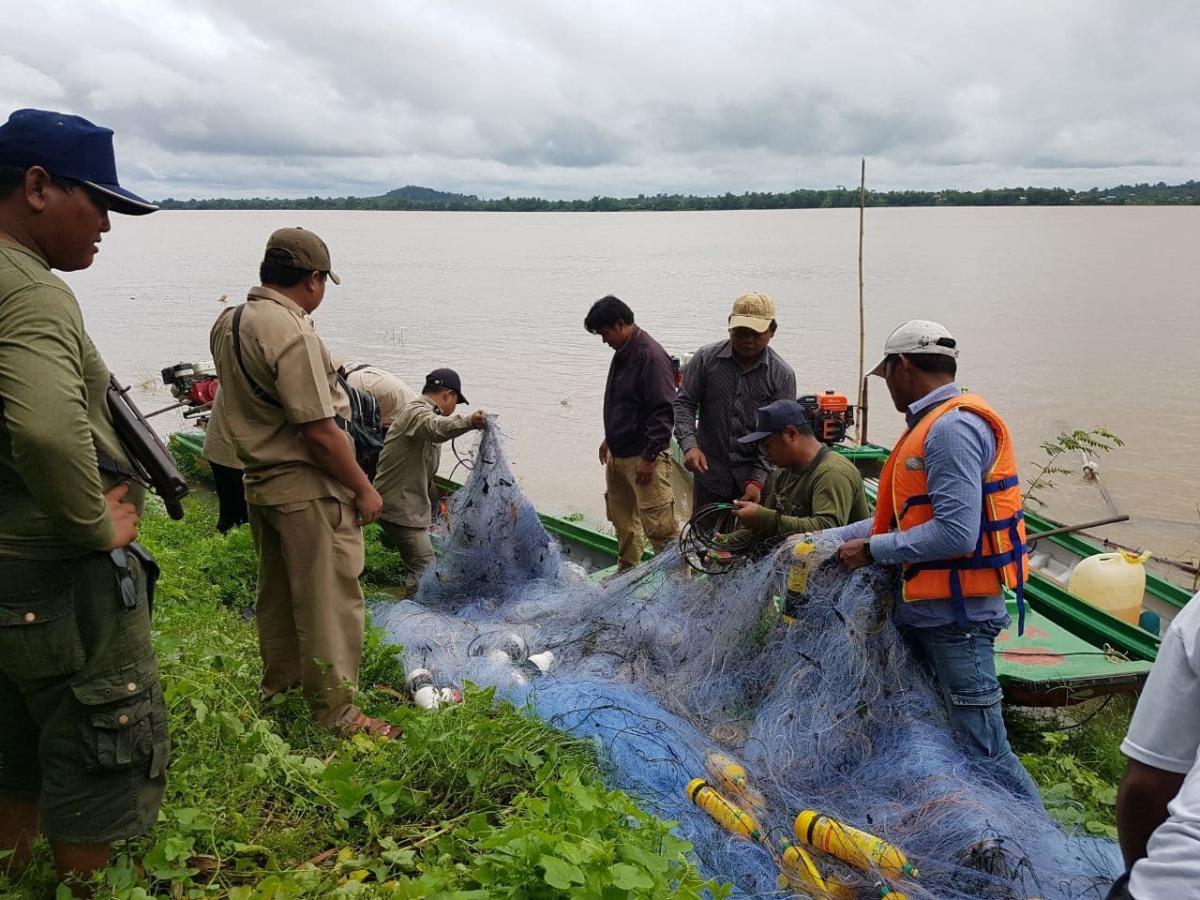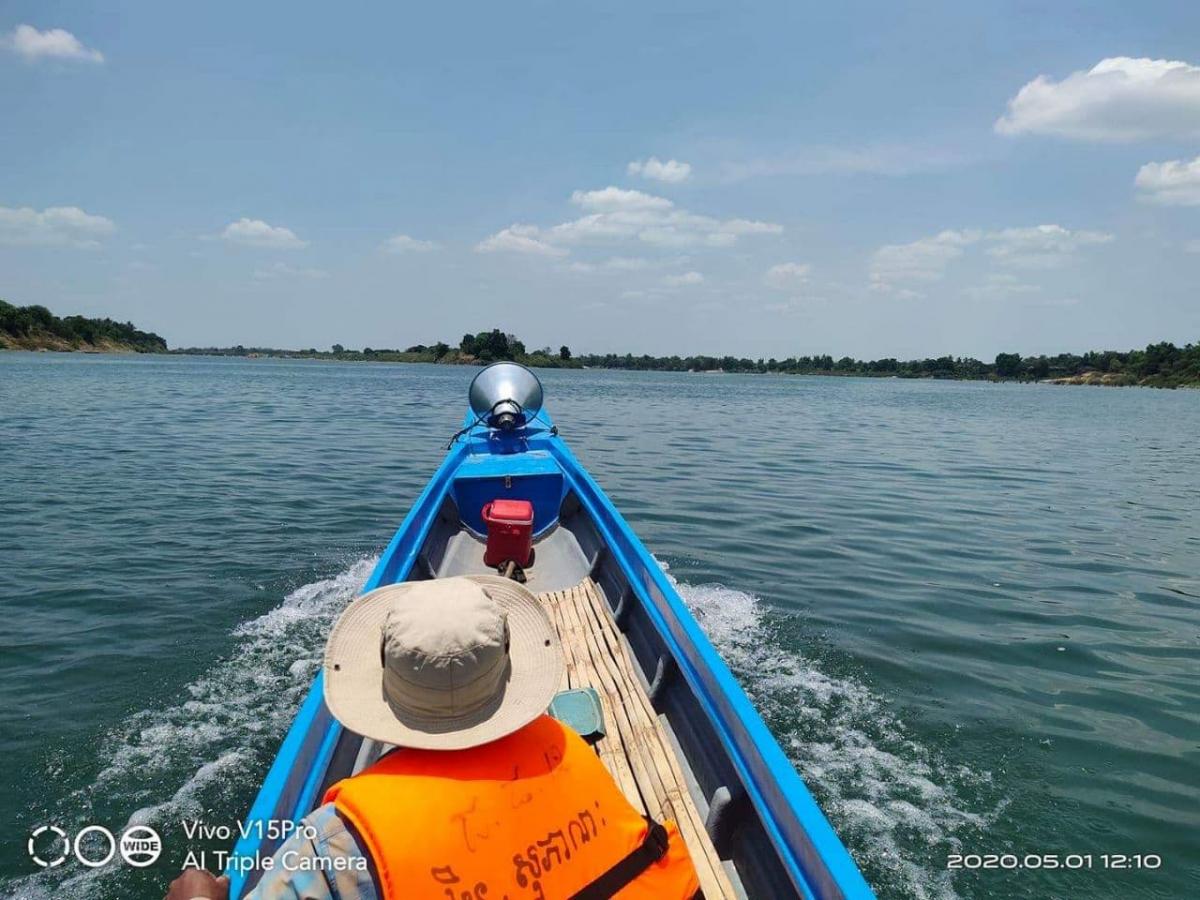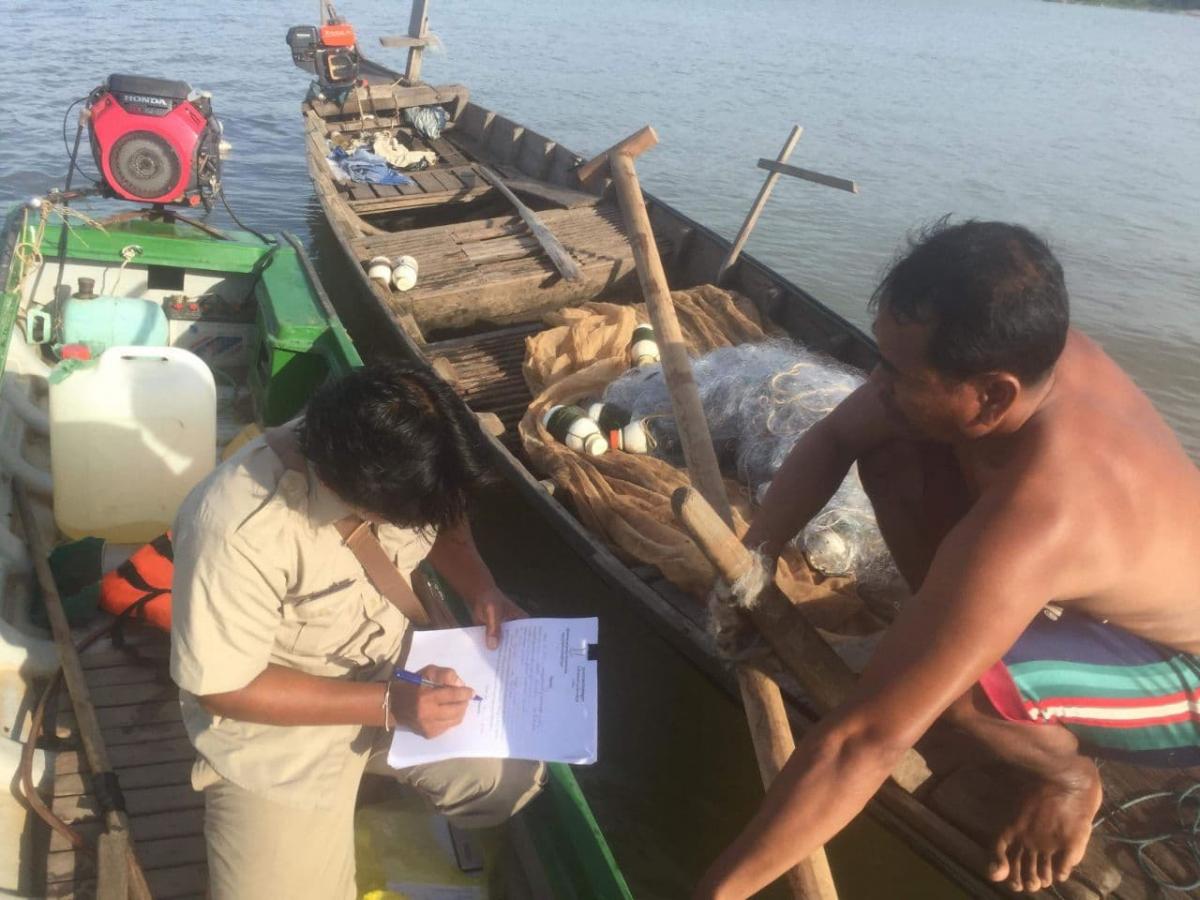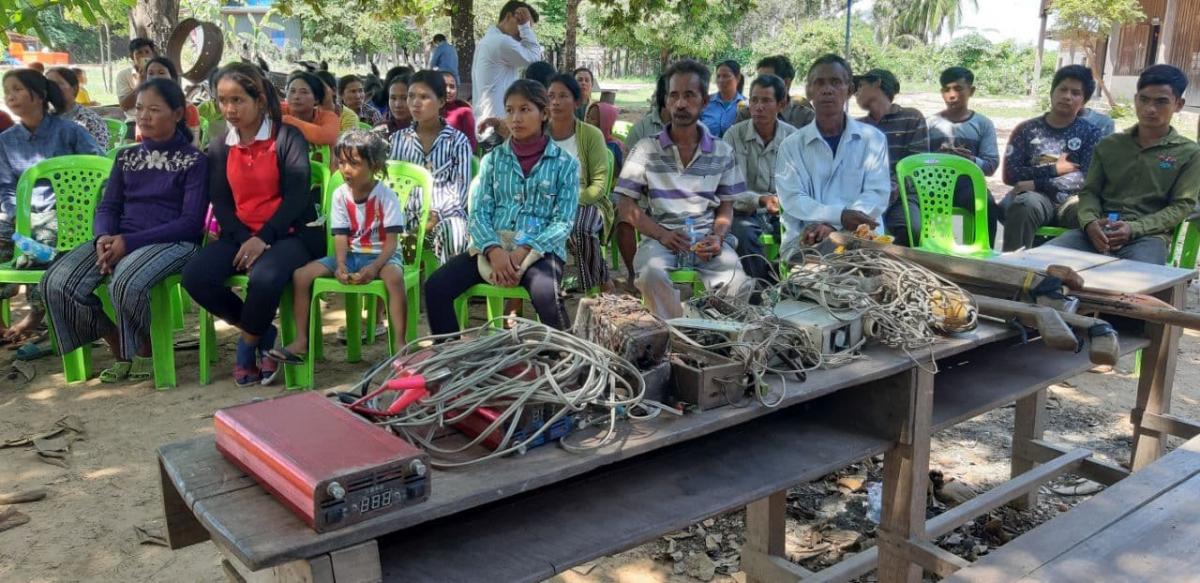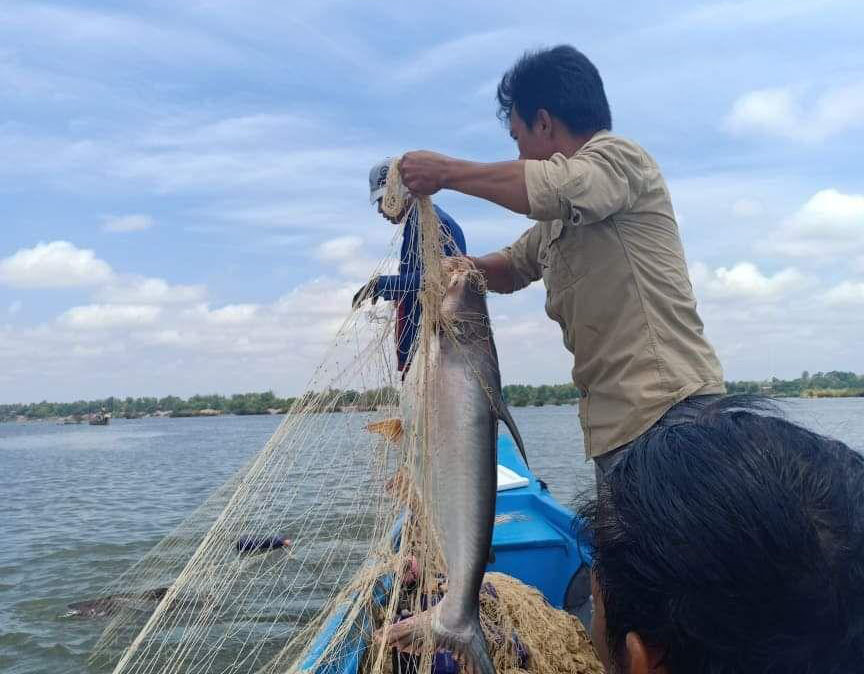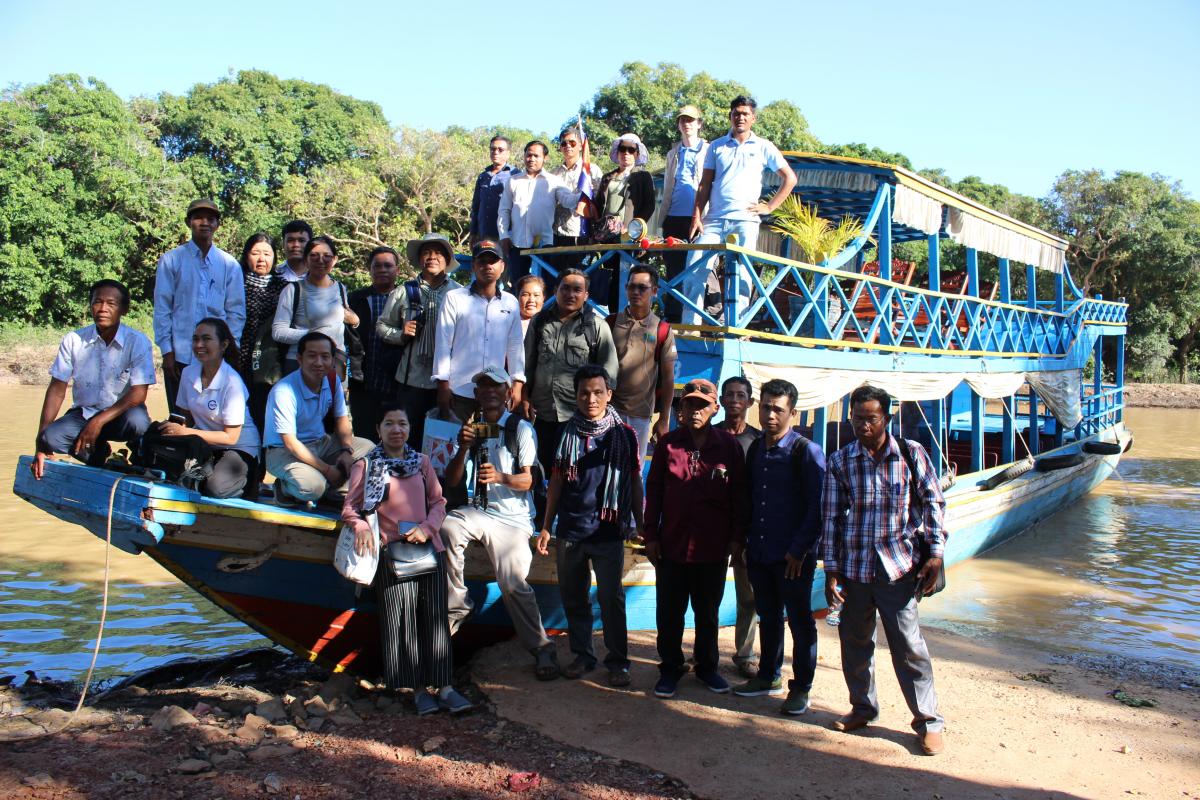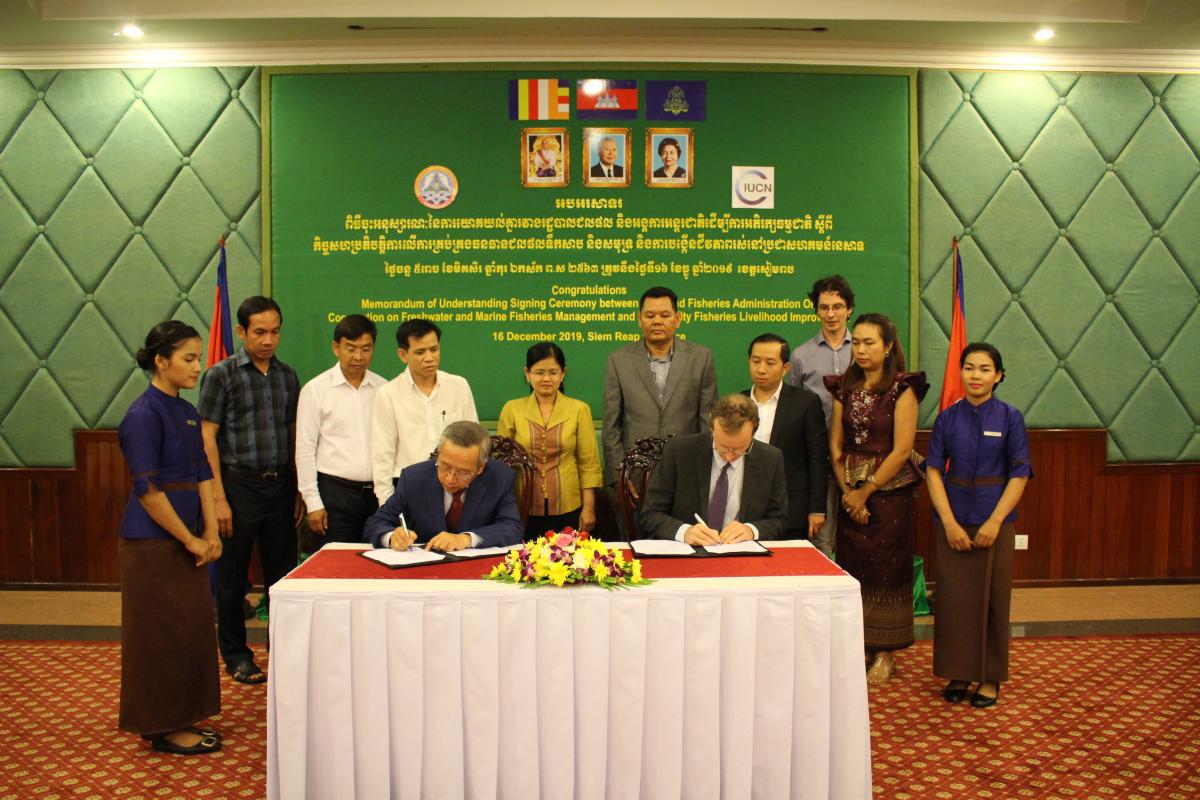Protecting Mekong broodstock in Stung Treng
The Stung Treng Ramsar Site, with its deep pools, rapids, and flooded forests, supports a rich fishery. Like many other fishing grounds in Cambodia, it is struggling to cope with illegal and destructive fishing using dynamite, electro-fishing, poisoning, drift nets, and small mesh gill nets, which has surged in the wake of the job-destroying covid-19 pandemic.
In response to this growing threat, the IUCN Netherlands Committee, through its Shared Resources, Joint Solutions (SRJS) initiative approved an emergency grant to strengthen fisheries management in the Ramsar Site.
Key to maintaining the productivity of the fishery is to protect the brood stock or “mother fish” that shelter in the deep pools during the dry season. To protect the broodstock, in 2019 and 2020 the province implemented a 5-month closed season from May 1 to September 30. If the close season starts on June 1, as is the case in the rest of Cambodia, it is too late to prevent human disturbance to fish spawning.
Local fishers were initially apprehensive about the extended close season but nearly all are now positive. One fisher claimed that if there were no corruption, fish catch would definitely increase and sought the full participation of village heads, commune councils, and district governors!
Eng Phyrong, Director of the Provincial Department of Environment, said that there were more fish in the Stung Treng Ramsar Site than in previous years as a result of the closed season. A fisher can now catch 4-5 kg of fish a day using traditional fishing gear of hooks and short nets in small tributaries.
Because of drought and impoundment of water by upstream dams, water levels in Stung Treng in 2019 and 2020 were exceptionally low, which limited the ability of fish to reach the flooded forests to spawn. In 2020, water levels only started to rise in late August, which limited the space for spawning in the flooded forests and other small tributaries and came too late for the 90% of mother fish that usually finish spawning by early August.
To support government oversight during the closed season, SRJS is financing construction of a guard post at Koh Treng and equipping its boat with new engines and life jackets. The guard post is located close to the deep pools and an illegal fishing hotspot, which makes patrolling easy. Stricter protection is strongly supported by local fishers because it suppresses illegal fishing. SRJS is also financing two mini-trust funds to build the autonomy and capacity of local fishing communities. IUCN, with KfW funding, and SDC have financed another eight mini-trust funds in Stung Treng to strengthen capture fisheries management.
Tum Nyro, Chief of the Fisheries Administration Cantonment, said that before the closed season was introduced in 2019, sales of mother fish in local markets in June-September reached 5-7 tons; in 2020 only 300-500 kg of mother fish, caught using traditional fishing gear, were sold. He added that since under natural conditions only 1 egg in 1,000 reaches maturity, the preservation of the brood stock is vital to sustain future harvests.
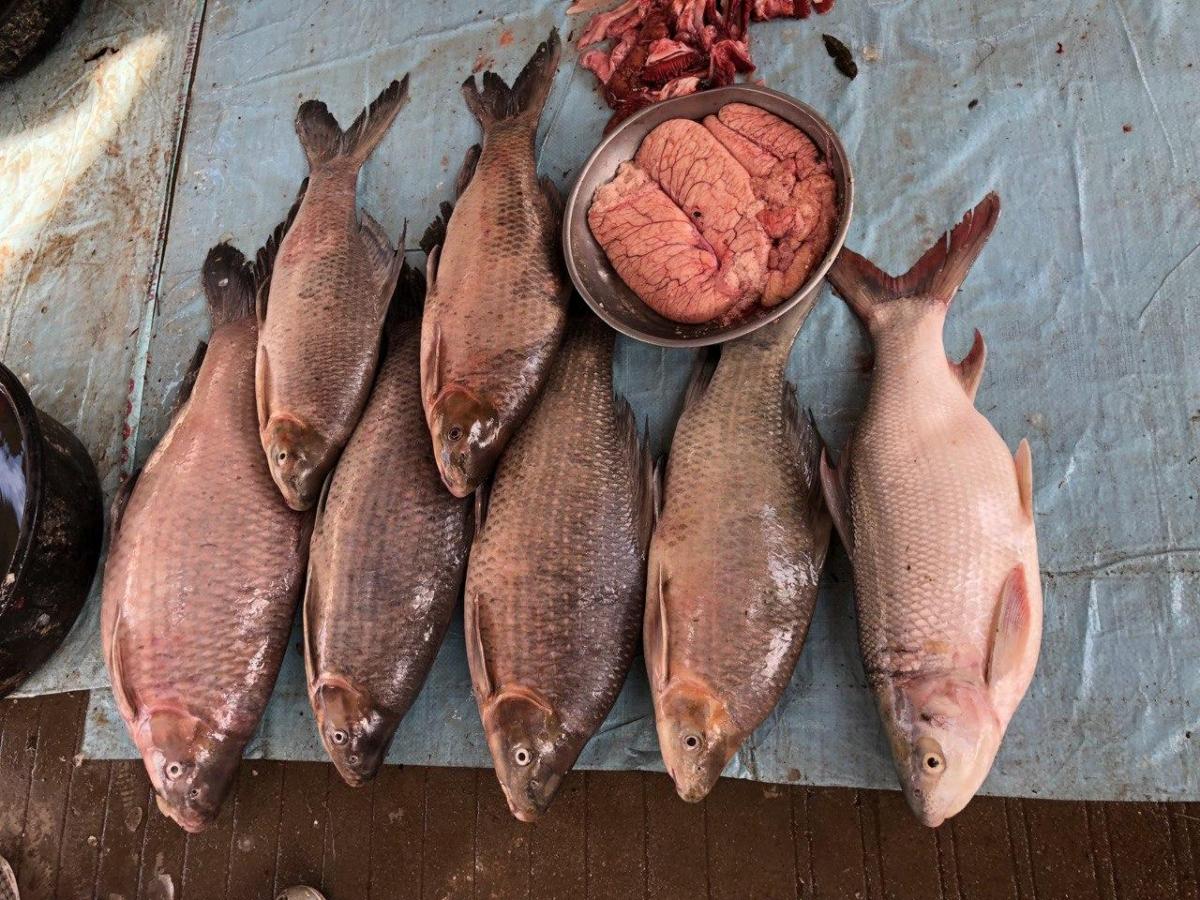 Photo: Mother fish were on sale in the local market © FiA Stung Treng
Photo: Mother fish were on sale in the local market © FiA Stung Treng
Taking into account the impact of the closed season across the province, Nyro concluded that over the last two years at least 7,000 tons of mother fish have been saved. Enforcement has been strict. In 2020, the Fisheries Administration confiscated 42 km (sic) of drift net, 15 1,500-m long bag nets, 660 m of mosquito net, 1,100 m of small mesh gill net, three boats, and two motorbikes, and arrested 11 offenders, and sent nine to jail.
The Fisheries Administration will survey fishers this open season to assess the effectiveness of the closed season on fish catch and diversity. The results will feed into further reforms for improved capture fisheries.
